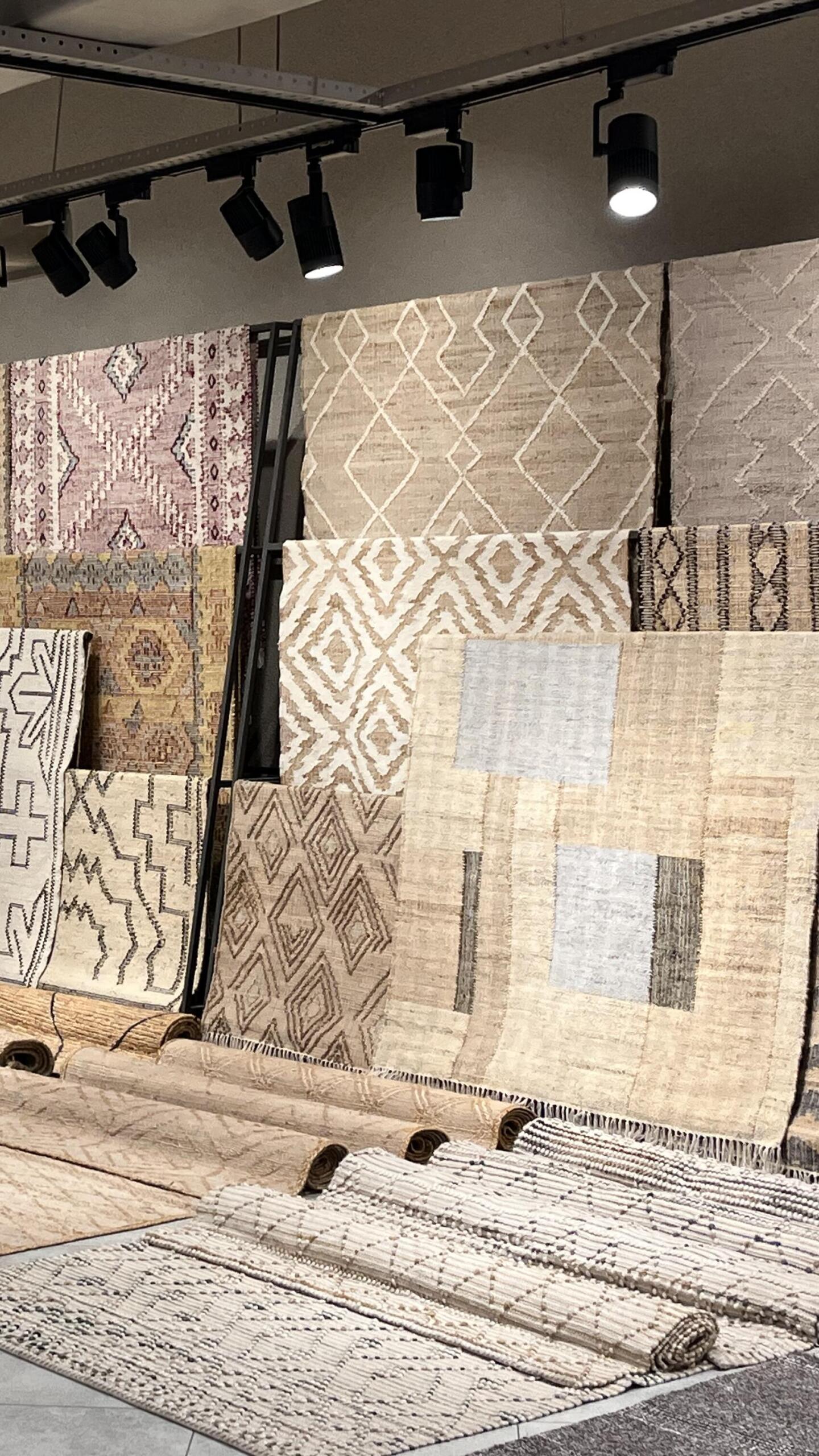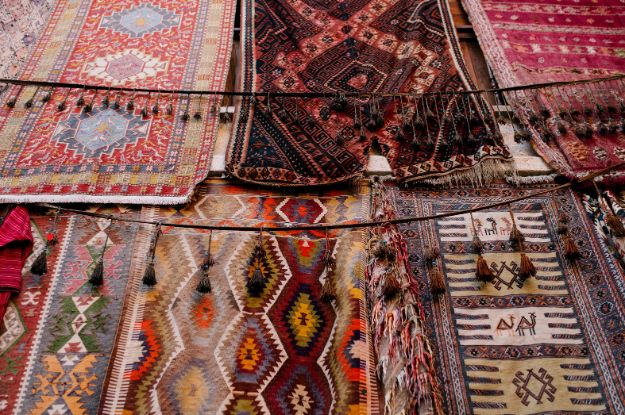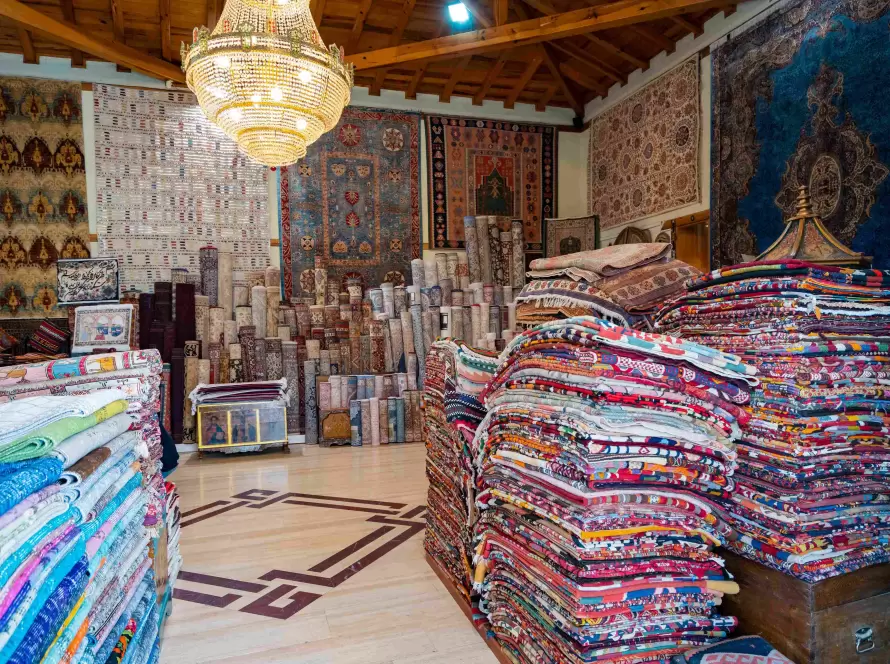Digital transformation means using new technology to improve the way a business works and delivers value to customers. It involves tools like online shopping platforms, artificial intelligence (AI), automation, and data analysis to help businesses grow and operate more smoothly.

The rug industry, long admired for its skilled craftsmanship and beautiful handwoven designs, is going through a big change with the help of digital technology. Like many other industries, the rug market is adapting to meet the expectations of modern consumers, who now look for more convenience, the ability to customize products, and faster service.
Why Does the Rug Industry Need Digital Transformation?

The rug industry has historically been a labor-intensive and artisan-driven market. While this approach has preserved traditional techniques and maintained high-quality products, it has also limited scalability and growth. The global rug and carpet market was valued at around $38 billion in 2022 and is expected to grow at a compound annual growth rate (CAGR) of 4.5% from 2023 to 2028. To keep up with this demand and the evolving preferences of consumers, rug manufacturers, retailers, and designers are turning to technology.
Why Shivalika Rugs?
Shivalika Rugs, a brand known for its exquisite handmade rugs, stands at the forefront of the digital transformation in the rug industry. With a deep-rooted tradition in craftsmanship and a commitment to quality, Shivalika Rugs is embracing technology to enhance its offerings and reach a global audience. In today’s fast-paced market, consumers seek convenience, personalization, and a seamless shopping experience, all of which digital tools enable.
By integrating e-commerce platforms, Shivalika Rugs offers customers the ability to browse their unique designs, customize sizes and patterns, and purchase rugs from the comfort of their homes. Augmented reality (AR) tools allow users to visualize how a rug will look in their space, bridging the gap between online and in-person shopping. Shivalika also leverages AI-driven personalization, providing tailored recommendations based on customer preferences and past purchases.
Additionally, Shivalika Rugs is committed to sustainability, incorporating digital innovations like data analytics to optimize production and reduce waste. Blockchain technology ensures transparency in sourcing, a key concern for eco-conscious buyers. By blending tradition with modern technology, Shivalika Rugs not only preserves its artisanal heritage but also positions itself as a leader in the evolving global market.
Key Drivers of Digital Transformation in the Rug Industry
1. Changing Consumer Behavior
With the rise of e-commerce and mobile shopping, consumers are increasingly turning to digital platforms to browse, customize, and purchase products. The e-commerce penetration rate in the home goods sector is projected to reach 23.5% by 2025, and the rug industry is a key part of this sector. Consumers expect a seamless online experience, with detailed product information, high-quality images, and easy customization options.
2. Customization and Personalization
Modern consumers want more than just a standard rug—they seek personalized designs that reflect their taste and home decor. Digital transformation allows businesses to offer customization options through online platforms, where users can select patterns, colors, and sizes tailored to their preferences. This shift has led to an increase in sales for companies that provide bespoke rug design services.
3. Operational Efficiency
Digital tools streamline the production process, from inventory management to supply chain operations. For instance, manufacturers can use data analytics and AI to predict demand, optimize production schedules, and reduce waste. Automation in weaving and dyeing processes has also reduced human error and improved efficiency. According to a report, companies that have adopted automation have seen a 20% increase in production efficiency.
Key Areas of Digital Transformation in the Rug Industry
1. E-commerce and Online Presence
A strong digital presence is crucial in today’s competitive landscape. Rug retailers are increasingly relying on online marketplaces and e-commerce platforms to reach a wider audience. By 2025, global e-commerce sales are expected to reach $7.4 trillion, with a significant portion driven by home goods and decor. Online rug retailers can leverage tools such as:
- Augmented Reality (AR): AR allows customers to visualize how a rug will look in their space by overlaying the design on a real-time image of their room through their phone or tablet. This feature helps bridge the gap between online shopping and in-store experiences.
- Virtual Showrooms: Virtual showrooms let consumers explore different rug designs, textures, and colors without leaving their homes. This innovation enhances the customer experience by offering a realistic, immersive shopping journey.
2. Artificial Intelligence and Data Analytics
Artificial intelligence is transforming how rug businesses predict consumer trends and optimize inventory management. Data analytics can forecast market trends, track customer preferences, and provide insights into the best-selling products. AI-driven personalization helps companies offer tailored recommendations to individual customers based on their previous purchases and browsing history.
Additionally, AI can be used in design automation—generating new rug patterns based on customer inputs or historical data. This reduces the time and effort required in the design process while still maintaining creativity and uniqueness.
3. Supply Chain Optimization
Managing a global supply chain has always been challenging in the rug industry, where materials are sourced from different regions, and production can be time-consuming. Blockchain technology is being used to track the origin of materials and ensure transparency throughout the supply chain. This is especially important for eco-conscious consumers who want to know that the materials in their rugs are sustainably sourced.
Internet of Things (IoT) devices are also used in monitoring logistics and ensuring timely deliveries. Sensors in warehouses and production facilities provide real-time data on inventory levels, preventing overproduction or stockouts. These advancements help streamline operations and cut costs for manufacturers and retailers alike.
4. Sustainability and Eco-Friendly Innovations
Sustainability is a growing concern for consumers, and the rug industry is under pressure to adopt environmentally friendly practices. Digital transformation is aiding in this transition through innovations like:
- Digital printing: Unlike traditional rug-making methods that use excess water and dyes, digital printing technology allows for precise color application, reducing water waste and the use of harmful chemicals.
- Recycled materials: Many companies are now using recycled textiles and fibers to create rugs. These materials are tracked using blockchain, ensuring transparency about their eco-friendly origins.
5. Enhanced Customer Experience
In an age where customer experience can make or break a brand, digital tools are essential for providing superior service. With chatbots powered by AI, rug retailers can provide 24/7 customer support, answering questions and assisting with purchases at any time. Furthermore, data-driven marketing allows for more personalized promotions, offering discounts and suggestions based on the customer’s past interactions with the brand.
Challenges of Digital Transformation in the Rug Industry
While digital transformation offers numerous benefits, there are also challenges, especially for smaller, traditional rug companies. The cost of implementing new technologies, training employees, and maintaining an online presence can be significant. Additionally, some companies may face resistance from artisans who are accustomed to traditional production methods.
Another challenge is maintaining the authenticity and craftsmanship that define the rug industry. As more automated processes take over, companies must strike a balance between efficiency and the artistic value that handmade rugs offer.
The Future of the Rug Industry
The future of the rug industry will likely see a further blending of traditional craftsmanship with modern technology. As the industry adopts more digital tools, there will be greater opportunities for customization, sustainability, and operational efficiency. The companies that can adapt to these changes and leverage the power of digital transformation will be well-positioned to thrive in the competitive global market.
According to forecasts, the global rug market is expected to reach $45.5 billion by 2028, driven by rising demand for eco-friendly products, custom designs, and online shopping. Digital transformation is not just a trend; it is a necessary evolution for businesses to stay competitive and meet the changing needs of consumers.
Conclusion
Digital transformation is revolutionizing the rug industry, providing businesses with the tools they need to meet modern consumer demands, streamline operations, and improve sustainability. By embracing e-commerce, AI, blockchain, and other digital innovations, companies can grow in an increasingly competitive and dynamic market. The rug industry’s future is bright, with technology playing a key role in its evolution while still honoring the artistry and heritage that define it.
FAQs
What role does digital printing play in the rug industry’s digital transformation?
Digital printing allows for more precise application of colors and patterns, reducing the waste of dyes and water typically associated with traditional rug-making methods. It also speeds up production and enables easier customization, making it an eco-friendly and efficient option for modern rug businesses.
How are small, traditional rug companies adapting to digital transformation?
While digital transformation offers numerous benefits, small rug companies may face challenges in adopting new technologies. Some are focusing on gradually integrating digital tools, such as e-commerce platforms and data analytics, to enhance their operations without sacrificing the authenticity and craftsmanship of traditional rug-making.
What is the role of blockchain in the rug industry?
Blockchain technology ensures transparency in the supply chain by tracking the origin of materials, which is essential for eco-conscious consumers. This helps rug businesses confirm the sustainable sourcing of materials and provides assurance of ethical practices throughout the production process.
How is AI impacting the design process in the rug industry?
AI is used to generate new rug designs based on historical data or customer inputs, significantly reducing the time and effort needed for creating custom designs. It also helps companies offer personalized product recommendations to individual customers, improving the overall shopping experience.
Can traditional artisans benefit from digital transformation?
Yes, artisans can benefit by leveraging digital platforms to reach a global audience and offer customized, handmade products. Digital tools also allow them to maintain their craftsmanship while improving operational efficiency through streamlined processes like inventory management and design automation.
What are virtual showrooms, and how do they improve the customer experience?
Virtual showrooms provide an immersive online shopping experience where customers can explore different rug designs, textures, and colors. This tool helps consumers make more informed decisions by allowing them to visualize how a rug would look in their space, creating a realistic and interactive shopping journey.
How does digital transformation contribute to sustainability in the rug industry?
Digital transformation aids sustainability efforts by reducing waste through technologies like digital printing and optimizing supply chains with real-time tracking and data analytics. Additionally, it facilitates the use of recycled materials in rug production, ensuring environmentally friendly practices.
What challenges do rug companies face when adopting digital technologies?
Some challenges include the high cost of technology implementation, the need for employee training, and potential resistance from traditional artisans who may prefer conventional methods. Balancing technological advancements with preserving the artistry of handmade rugs is also a key concern.
How does IoT (Internet of Things) technology enhance supply chain management in the rug industry?
Lot devices provide real-time data on logistics, inventory levels, and production status. This allows companies to monitor and optimize supply chains more effectively, reducing the risk of stockouts or overproduction and ensuring timely deliveries.
What future trends can we expect in the digital transformation of the rug industry?
The rug industry is likely to see more advancements in automation, AI-driven personalization, and sustainable practices. Customization options will continue to expand, and online shopping experiences will become more immersive with tools like augmented reality and virtual showrooms.
References:
- Market Research Future. (2022). “Global Rug Market Size, Share & Trends Analysis Report.”
- Statista. (2023). “E-commerce Penetration in Home Goods.”
- Grand View Research. (2023). “Global Carpet and Rug Market Report.”
- Business Wire. (2023). “AI in Manufacturing and Automation: Efficiency Gains.”
- TechNavio. (2023). “Rug Market Growth and Forecasts for 2028.”
- McKinsey & Company. (2023). “Digital Transformation in Home Decor: Strategies for Growth.”




